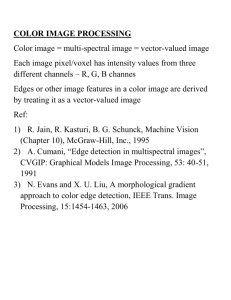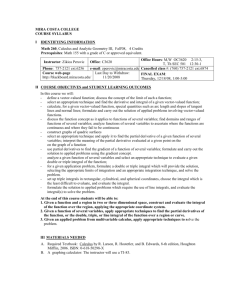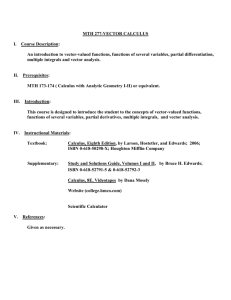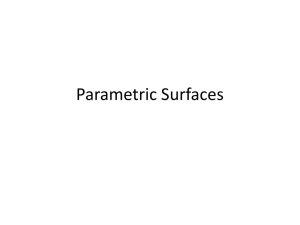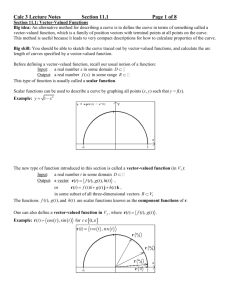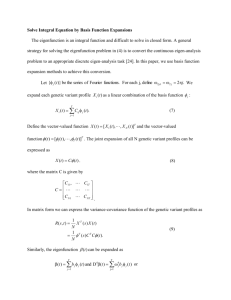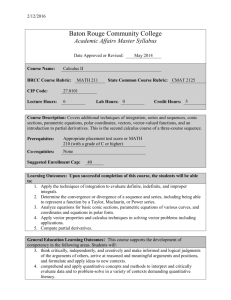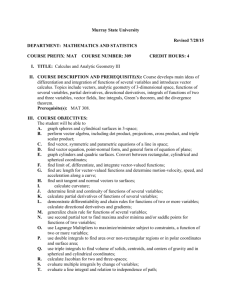Vector-Valued Functions
advertisement
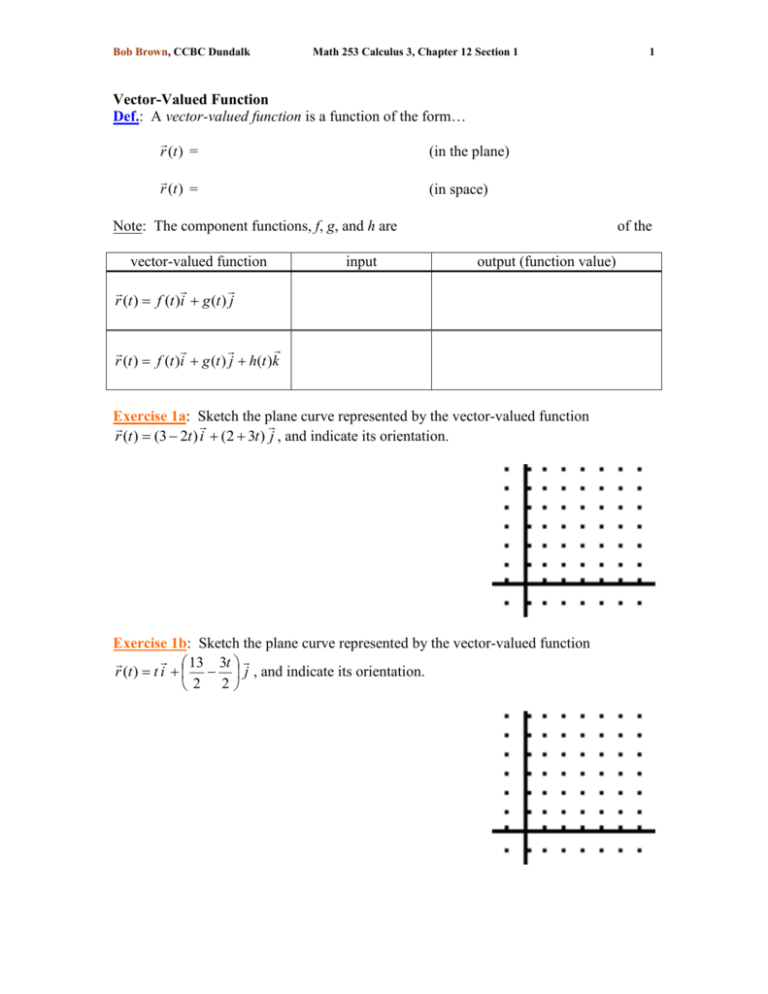
Bob Brown, CCBC Dundalk Math 253 Calculus 3, Chapter 12 Section 1 1 Vector-Valued Function Def.: A vector-valued function is a function of the form… r (t ) = (in the plane) r (t ) = (in space) Note: The component functions, f, g, and h are vector-valued function input of the output (function value) r (t ) f (t )i g (t ) j r (t ) f (t )i g (t ) j h(t )k Exercise 1a: Sketch the plane curve represented by the vector-valued function r (t ) (3 2t ) i (2 3t ) j , and indicate its orientation. Exercise 1b: Sketch the plane curve represented by the vector-valued function 13 3t r (t ) t i j , and indicate its orientation. 2 2 Bob Brown, CCBC Dundalk Math 253 Calculus 3, Chapter 12 Section 1 Note 1: The plane curve is not the output of the function, but it is associated with/to the output of the function. The actual output of the function is a set of vectors, whereas the curve is the graph of the connected “heads” (tips) of the vectors. Note 2: Although the vector-valued functions in Exercises 1a and 1b have the same plane curve, they are technically different functions because they have different orientations. Moreover, we see by these exercises that a curve does not have a unique parametric representation. Domain of a Vector-Valued Function The domain of a vector-valued function is the intersection of the domains of the component functions. 1 Exercise 2: Determine the domain of r (t ) i 4 t j ln( t 5) k . t Note 3: A parameterization of the line segment that connects the point P1 x1 , y1 and the point P2 x2 , y2 and that is oriented from P1 to P2 is given by r (t ) = r ( 0) = = the vector in standard position whose terminal point is r (1) = = the vector in standard position whose terminal point is Note 4: A parameterization of the line that passes through the point P1 x1 , y1 and the point P2 x2 , y2 and that is oriented from P1 to P2 is given by r (t ) = Exercise 3: Determine a parameterization of the line segment that connects P1 = (1,3,5) and P2 = (4,0,-1) and that is oriented from P1 to P2. 2 Bob Brown, CCBC Dundalk Math 253 Calculus 3, Chapter 12 Section 1 Note 1: To parameterize a plane curve y = f(x), a “natural” choice is to let 3 and Exercise 4: Determine vector-valued functions that form the boundary of the region below. Note 2: Later, when we study line integrals, we will have to consider the two curves as a single curve (the boundary of a region) and parameterize the boundary with a single vector-valued function. Exercise 5: Sketch the space curve represented by the vector-valued function r (t ) 2 cos(t ) i t j 2 sin( t ) k , 0 t 4 . t r (t ) 0 2 π 2π 3π 4π your attempt (don’t look over there ) z y x Maple spacecurve([2*cos(t),t,2*sin(t)],t=0..4*Pi); Bob Brown, CCBC Dundalk Math 253 Calculus 3, Chapter 12 Section 1 Limit of a Vector-Valued Function Def.: vector-valued function 4 lim r (t ) t a r (t ) f (t )i g (t ) j r (t ) f (t )i g (t ) j h(t )k Note 1: lim r (t ) exists provided that the limit as t a of each of the component t a functions exists. Continuity of a Vector-Valued Function Def.: A vector-valued function r (t ) is continuous at t = a if (i) and (ii) Note 2: From this definition we see that a vector-valued function is continuous at t = a if and only if each component function is continuous at t = a. Def.: A vector-valued function r (t ) is continuous on an interval I if it is continuous at every point in the interval. Exercise 6 (Section 12.1 #67): Evaluate the limit sin( t ) lim e t i j e t t 0 t k .
